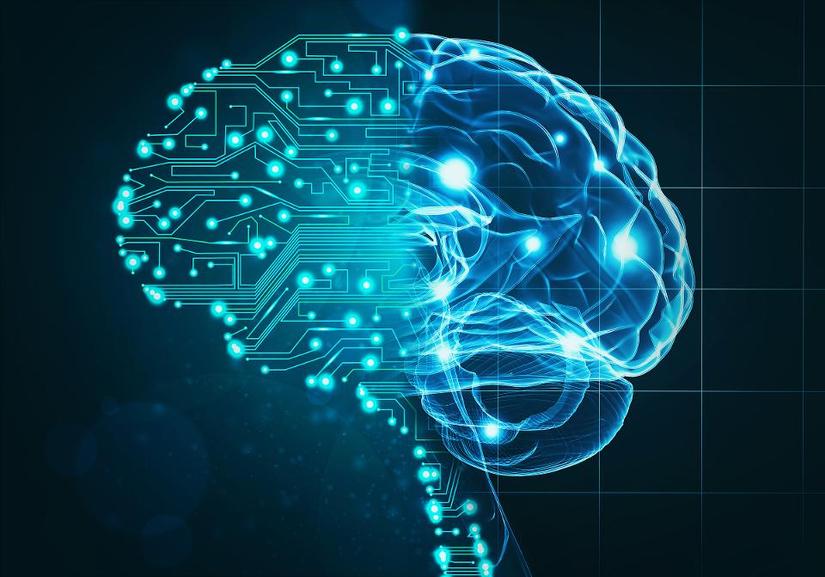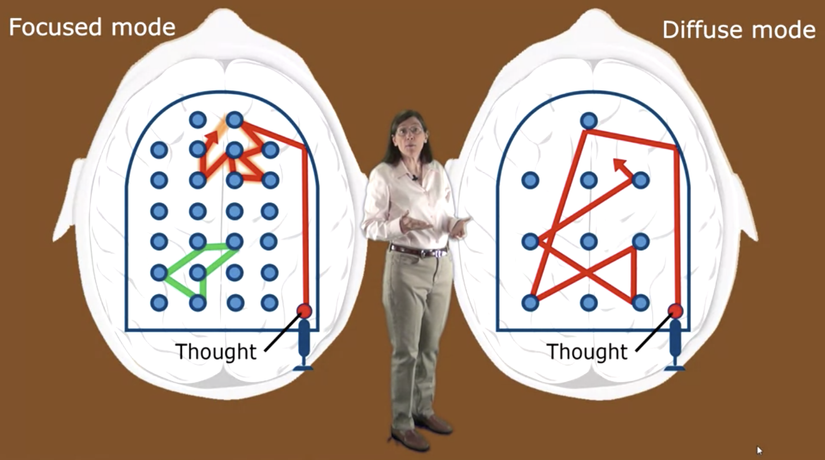
1. Brain structure
The brain can be considered as the most complex structure in the universe. It is so complex that for centuries, what people know about the brain is only a very small part, like a drop in the ocean. There are things that people cannot explain, such as a student being able to read 100,000 decimal digits correctly, a person who can remember every single detail of his life or a natural sister. memories of the twin brother. There are many mysteries about the brain we need to uncover – our brain is a miniature universe.
Structure : The human brain consists of about 100 billion neurons – 1,000 times the number of stars in our galaxy (our galaxy). Neurons can link up to 10,000 other neurons. The average human brain has an average of 10 ^ 15 (1 million billion bonds). What makes the brain power: thoughts, calculations, emotions, memories, archives, including hunches … are these connections. A bee has about 7000 neurons, which is enough for it to build and operate an entire “empire”, calculate the distance to extract nectar, breed, take care of the young, control, communicate, fight the enemy. … Our brains have hundreds of millions of neurons, and hundreds of billions of connections in our bees’ brains.
All of that shows how big a supercomputer we own. It also means that if one takes advantage of it, anyone can become a genius. However, despite being given to a supercomputer, but we do not have a user manual.
2. Focus mode and diffuse mode
Mechanism of learning: As we learn new knowledge, new connections are gradually created, forming new habits, thinking skills, calculations, memories, memories. To make it easier to understand, try crossing your arms (assuming right top-left bottom), which is quite easy. Now try turning your hand left-to-right below, it’s embarrassing isn’t it. Try doing this again and again 15 times, you will find you no longer embarrassed. That’s because our brains have just made new connections, learned new things.
The brain’s ability to learn is immense, and most people don’t learn it properly. And if you understand more about the brain, the learning process will be easier, less tired.
Scientists find that the thought process is divided into two types: focus mode and diffuse mode . Focus mode is familiar to us, typically when we focus on solving a problem, thinking about a solution to a problem or reading a book. In contrast, most ordinary people do not pay much or know much about diffuse mode. That’s when we let the flow of thoughts wander, wander, or on a stronger level than unconscious thoughts. 
To make it easy to imagine, let’s imagine how the brain thinks like a game of binball. In the right case, due to the dense number of green spots it seems the marble will bounce around a certain area during the shoots. It is similar to when we think in focus mode, we have a certain knowledge of that type of math, there is a pre-existing thinking so we will think in that way, trying to relate to the What we did in the past.
However, in cases where we have never encountered that kind of math, the brain does not already have those links. We fall into a state of wandering thoughts, groping, a wider area of thinking like marbles running around in a wide area.
Both of these mechanisms have the advantage: focus mode helps us to dig into a problem (but think in the same way). Meanwhile, diffuse mode helps us create new solutions, new views (think outside the box).
It is found that most genius of painting, music, math … have the ability to “dance” back and forth between these two modes. For example, Edison, he often sat in a chair relaxing with a glass of wine, wandering in the thinking area and falling asleep. Suddenly, in the dream, there was a vague idea, he immediately woke up and put the vague idea that he had just thought from diffuse mode to jump to focus mode to dig deeper, visualize clearly and be realistic. chemistry it.
So: the key to the problem is that you need to be able to “jump” back and forth between these two modes of thinking. Of course, we are not geniuses so it is difficult to have that ability, but we can completely train. Pomodoro is the keyword for this topic.
3. Practice – Permanent
Before learning about Pomodoro, we dive deeper into learning. When we learn something new, neural links are formed throughout the learning process. Even the concepts that I have just learned are still quite vague, seemingly abstract, the neural links about it are real and tangible (“real and concrete” I don’t know which words to use in Vietnamese). . These newly formed links are weak and few. By thinking about this knowledge over and over, neuron connections become stronger, wider and more powerful. That is the effect of practicing many times when learning something new. This is typical of the writer Lu Tan’s saying, “In reality, there’s no way in the world, people just turn into sugar.”
In order to acquire knowledge better, we need to have time for relaxation and alternation. During this time, the brain automatically vaguely thinks about concepts just learned and other miscellaneous things. This is important because the brain is automatically reviewing and locating new knowledge in memory space, giving us a more comprehensive and comprehensive view of the new problem. That is the great effect of switching from focus mode to diffuse mode.
This also proves that the little you study a day will work many times more than cramming. Just like studying English for a week, you study 2 hours a day more effectively than you cram in the first 3 days and then rest for the remaining 4 days. Because in your sleep, these new bonds are gradually forming and strengthening. And of course, the solution to effective training is also pomodoro
4. Pomodoro
Procrastination is the problem most people face. When we learn something new or something we don’t like, the brain automatically activates the brain area associated with pain. It is a common phenomenon when we are forced to learn something, or read incomprehensibly and feel headache. The brain then finds its way out of that painful state by turning its attention to the other things it loves. And then you lose concentration completely. The important thing is that “not long after you overcome the temptation, really paying attention to what you are thinking, then all the pain will disappear quickly”. Pomodoro is the solution to that problem
Pomodoro: is a method of learning, an extremely effective method of time management. “doing 25p – 5p breaks” is the core of this method. The scientists found that on average, an average person is able to concentrate really for 25 minutes, after which they gradually become distracted and distracted. So use your stopwatch and start working, be really focused, not allowed to think about other issues, don’t do errands, don’t go to the toilet, don’t surf facebook. When all 25p, you relax within 5p, can listen to 1 song, surf facebook, do whatever you want … After 5p back to the 25p – 5p loop.

The effectiveness of pomodoro is directly proportional to your self-discipline. Perhaps due to unfamiliarity at first, because of the 25p state, we still tend to be distracted and miscellaneous. Similarly, at the end of 25 minutes, we still try to work for a few more minutes, while at the end of 5 minutes, we try to relax more. To perform this method, you need to comply with the law, not allowed to engage in two work-off states. This is how you train your brain to quickly switch between focus and diffuse modes. And also a way to help you practice the ability to focus on one thing quickly, overcome headaches when doing things you do not like.
In addition Pomodoro is also an extremely good time management method, avoiding work after doing something, you rest for too long making the “spirit of delay” go up again. Suppose you work 8 hours a day, with this method if you follow the discipline, you will have 6 hours 30p to work, 1h30p to rest.
Currently there are many Pomodoro App on many platforms, you just need to type the keywork “pormodoro”, “timer”, “worktimer” will be out. Download and comply with what you set out. You may have a hard time in the first few days, but you will get used to it and the discipline will be more and more effective.
Conclusion : Pomodoro is the “gym” way for your brain. Please apply it, really disciplined and serious.
In the next section I will talk more about memory, short-term memory, long-term memory and “chunking” memory.
Reference source :
https://www.coursera.org/learn/learning-how-to-learn
Book: I’m talented, so are you
